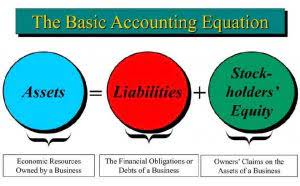
Start by choosing the financial statements that are relevant to your analysis objectives. Consider which statements provide the most meaningful insights based on your analysis goals. Items such as expenses, current assets, liabilities, among many others may have been added or removed when compared to the base period and, as balances are compared sequentially, this leads to a loophole. Also, trends are identified to define the actual performance of the company in relation to its first accounting year and how it is predicted to fare as time passes.
- For this example, I will carry out the analysis of the data reported for 2021 and 2022.
- For demonstration purposes, the percentages have been rounded to the nearest whole number.
- Let’s illustrate the application of these advanced techniques with an example.
- The percentage representation makes it easier to determine the level of change between these different periods.
- Horizontal analysis, also known as trend analysis, is used to spot financial trends over a specific number of accounting periods.
- Cash in the current year is $110,000 and total assets equal $250,000, giving a common-size percentage of 44%.
- 11 Financial’s website is limited to the dissemination of general information pertaining to its advisory services, together with access to additional investment-related information, publications, and links.
Through horizontal analysis, the different items can be seen to have different increases and decreases, with each item only compared with its corresponding counterpart in the alternate balance sheet. A trend is then determined and the level and quality of details you obtain from your financial statements depend on the software or accounting technique you use. In this article, you will learn everything you need to know about the horizontal analysis of financial statements. Vertical analysis, ratio analysis, and cash flow analysis are commonly used alongside horizontal analysis to gain a comprehensive understanding of a company’s financial position. Horizontal analysis is important because it allows you to compare data between different periods and makes it easier to identify changes in trends. This can be helpful in making decisions about whether to invest in a company or not.
Importance of Horizontal Analysis in Financial Reporting
For this technique to be used, at least two financial statements (of the same type) need to be in existence. To get a more valid analysis, however, at least three financial statements are used. The more statements available and used for analysis, the greater the results obtained. The example from Safeway Stores shows a comparative balance sheet for 2018 and 2019 following a similar format to the income statement above. You can also choose to calculate income statement ratios such as gross margin and profit margin. Horizontal, or trend, analysis is used to spot and evaluate trends over a specific period of time.
Year 1 sales revenues are considered our base, which is why we have an index of 100. We take the actual revenues for Year 2 and divide by actual revenues for Year 1 ($21,862/$18,627). Now we can compare our index in Year 2 to the index in Year 1 ( ), which equals 27. We will apply this formula to each line item to calculate its absolute change. As in the prior step, we must calculate the dollar value of the year-over-year (YoY) variance and then divide the difference by the base year metric.
Horizontal Analysis – Percentage Change
Even though the percentage increase in the equipment account was 107%, indicating the amount doubled, the nominal (just the number) increase was just $43,000. This increase in relation to total assets of $3.95 million is only 1% and could easily be just one piece of equipment, or a vehicle. Financial statements, including the income statement, balance sheet, and cash flow statement, provide a comprehensive overview of a company’s financial performance. However, these statements are typically presented for a single period, making it challenging to gauge the company’s performance over time. A notable problem with the horizontal analysis is that the compilation of financial information may vary over time. In the world of financial analysis, mastering advanced techniques and tools can take your horizontal analysis skills to the next level.
To conduct horizontal analysis i.e. evaluate underlying trends, it’s essential to compare financial statements of a company or companies over two or more accounting periods. Horizontal analysis (also known as trend analysis) looks at trends over time on various financial statement line items. A business will look at one period (usually a year) and compare it to another period.
Horizontal Analysis on Income Statement Example
This standardization allows for a detailed analysis of individual components in relation to the whole. Horizontal analysis, also known as trend analysis, involves the comparison of financial statement data across horizontal analysis formula multiple periods to identify trends, patterns, and changes. By examining year-to-year changes in key financial metrics, you can gain insights into a company’s growth, stability, and overall performance.